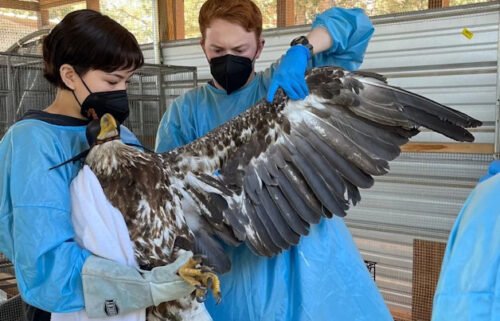New study on Oregon’s semiconductor workforce calls for closer coordination among education, industry partners

SALEM, Ore. (KTVZ) – The Higher Education Coordinating Commission on Tuesday released Oregon’s first Semiconductor Workforce and Talent Assessment, providing an overview of the semiconductor industry and workforce landscape. The study recommends significant changes focused on strengthening education pathways and diversifying the workforce in order to address the talent needs of Oregon’s growing semiconductor industry.
The assessment, developed for the HECC by ECOnorthwest and Dr. Wilfred Pinfold, arrives as the sector prepares for $40 billion in capital investment expected to result from historic incentives and support in the federal CHIPS and Science (CHIPS) Act and in Oregon’s own CHIPS Act passed last year. Oregon officials anticipate the new investments will create 6,300 direct new jobs and 1,000 construction jobs in the state.
The Oregon semiconductor and related device manufacturing industry employs nearly 31,000 workers, with an average annual wage that is approximately two and a half times higher than the average statewide wage. Oregon’s chip industry accounts for 15 percent of national employment in the sector and covers a wide range of occupations and skill levels in research and development, production and testing, and support functions.
The availability of skilled workforce talent—from entry-level workers to those with short-term credentials and advanced degrees—is essential to meeting the industry’s plans for expansion.
This study's analysis of student-level data begins to describe the paths Oregon students take from high school, through postsecondary education and training, and into the semiconductor workforce. The analysis shows that semiconductor-related programs and curricula are well established in Oregon, but that current educational pathways must expand to meet the scale of the coming investments. These pathways generally are not designed to adapt swiftly to the rapidly changing demands of the industry.
The study emphasizes that stronger collaboration among employers, educators, and community partners will be critical to ensuring education and training is both responsive to industry and supportive of students. Both educators and employers cite the need to support students in preparing for the industry and advancing within it. Current and prospective workers will need lifelong learning opportunities to support their skills and progression.
The study identifies several strategies to advance a diverse semiconductor workforce, including: early student awareness of semiconductor industry occupational opportunities, more STEM education, and greater access and supports for students from historically underserved communities.
Among numerous recommendations, the assessment calls for the formation of a talent working group or industry consortium—including industry, education, community-based, and workforce partners—to collaborate, continue to analyze workforce needs, and work to expand entry and advancement in Oregon’s semiconductor workforce.
"As we navigate the transformative growth of Oregon's semiconductor industry, public-private collaboration is essential,” said Sam Johnson, Intel’s Vice President of Manufacturing & Supply Chain Operations and General Manager of Technology Development Manufacturing Facilities. “Our work with local governments, workforce agencies, universities, community colleges and local school districts helps to foster an inclusive ecosystem that cultivates talent and innovation, driving economic prosperity. The Semiconductor Workforce and Talent Assessment underscores the urgency for strategic alignment in education pathways and workforce diversification to meet the demands of this growing sector."
Robert Stone, Executive Director of Impact Studio and Interim Director of Economic Development and Industry Relations for Oregon State University, said: “Oregon State University (OSU) appreciates that the report clearly identifies the workforce needs for Oregon’s semiconductor sector. OSU is poised to meet those needs through its broad array of semiconductor-related programs, from innovative microcredentials to certificates to undergraduate and graduate degrees from our colleges of engineering, business and science. The semiconductor industry is a key sector for OSU as we step up to support the economic development of the state.”
“The HECC looks forward to working with the Governor, Legislature, and local and state agencies to advance the recommendations included within this report,” said Ben Cannon, HECC’s Executive Director. “It is clear that our education and training partners have a major role to play in order to meet the workforce needs of this important sector of Oregon’s economy.”
This study is part of the HECC and the Workforce and Talent Development Board’s work with partners to assess workforce and training needs statewide in order to inform funding and policy decisions and collaborative strategies. In addition to this study, every two years the HECC publishes a Talent Assessment focused on the workforce needs of Oregon businesses. The next Talent Assessment for all industries is expected to be released in spring 2024.



